- News
- Reviews
- Bikes
- Accessories
- Accessories - misc
- Computer mounts
- Bags
- Bar ends
- Bike bags & cases
- Bottle cages
- Bottles
- Cameras
- Car racks
- Child seats
- Computers
- Glasses
- GPS units
- Helmets
- Lights - front
- Lights - rear
- Lights - sets
- Locks
- Mirrors
- Mudguards
- Racks
- Pumps & CO2 inflators
- Puncture kits
- Reflectives
- Smart watches
- Stands and racks
- Trailers
- Clothing
- Components
- Bar tape & grips
- Bottom brackets
- Brake & gear cables
- Brake & STI levers
- Brake pads & spares
- Brakes
- Cassettes & freewheels
- Chains
- Chainsets & chainrings
- Derailleurs - front
- Derailleurs - rear
- Forks
- Gear levers & shifters
- Groupsets
- Handlebars & extensions
- Headsets
- Hubs
- Inner tubes
- Pedals
- Quick releases & skewers
- Saddles
- Seatposts
- Stems
- Wheels
- Tyres
- Health, fitness and nutrition
- Tools and workshop
- Miscellaneous
- Buyers Guides
- Features
- Forum
- Recommends
- Podcast
BUYER'S GUIDE
 Get to know the Garmin Edge GPS bike computer range Dec 2021
Get to know the Garmin Edge GPS bike computer range Dec 2021Get to know the Garmin Edge GPS bike computer range
If you’re thinking about buying a GPS bike computer, chances are that at least one Garmin Edge has made it on to your shortlist. How do you choose between them? That’s where we can help.
-
Garmin pioneered the cycling GPS unit back in the mid-2000s with the first Edge 205; that first-mover advantage has kept them at the forefront of the category despite strong competition
-
Like other cycling GPS units, Garmin's fall broadly into two categories: with and without maps. Non-mapping Edge models are good for ride-recording and fitness tracking, mapping units add detailed navigation capabilities
-
Garmin Edge GPS units capable of ANT+ and Bluetooth communication are available with and without sets of sensors; unless you really need a speed and cadence sensor, the premium is usually silly and you're better buying a third-party heart rate sensor
-
Nominally discontinued Garmin Edge devices often persist in the retail channel at discounted prices
The Garmin Edge GPS bike computer range
We’ve reviewed most of the Garmin Edges here on road.cc, so whether you want something simple to show your speed and track your ride, or you want advanced navigation and/or high-tech training features, we can talk you through what’s on offer.
As ever, we've cited the best on-line prices we can find at the time, but they do vary. If you really want to save money you can also consider older Garmin Edge computers. These have been superseded in the range but can still be found second hand.
Read more: The stuff they don't tell you about GPS bike computers
The current Garmin Edge cycling GPS computer range
Edge 1030 Plus — £420.47 | £499.99 (bundle with sensors)
RRP: £599.99 (Performance bundle)
Size: 58mm x 114mm x 19 mm
Display size: 88.9 mm diagonal, 282 x 470 pixels
Weight: 124g
The Edge 1030 Plus is Garmin's flagship on-bike GPS, but it's an incremental improvement over the Edge 1030, below, rather than a great leap forward.
In addition to the Edge 1030's features and 282 x 470 pixel screen, the Edge 1030 Plus gets Garmin's Climb Pro app which gives you a load of data about the climb you're toiling up to a) distract you from the pain and b) help you pace yourself so you don't blow it all on the first steep bit. Climb Pro was first launched on the Edge 530 and has been added via a software update to the Edge 1030.
For off-road riding, the Edge 1030 Plus has the Trailforks app, preloaded with trail details from “more than 80 countries.” Its Forksight mode lets you know about upcoming forks in the trail and shows you where you are in a trail network.
The Edge 1030 Plus also lets you pause turn guidance on a route you're following and pick it up later. That means you can go explore a newly-discovered byway, or divert into a town for cake without the unit trying to recalculate your route or tell you you're off course.
Last but not least, Garmin has beefed up the battery compared to the Edge 1030, and now claims it'll go up to 24 hours even with multiple paired sensors and connected features, including LiveTrack running.
Buy if: You want the latest features, largest screen and longest battery life
Edge 830 — £299.99 (£359.99 with sensor bundle)
RRP: £349.99 - with sensor bundle: £429.99
Size: 49mm x 73mm x 21mm
Display size: 66mm diagonal, 246 x 322 pixels
Weight: 79.1g
The Edge 830 is the Edge 530's big brother, with a touchscreen and fewer buttons but otherwise almost identical set of features.
The significant differences between the 830 and 530 relate to navigation. The 830 can find and navigate you to a specific address or point of interest, which the 530 can't, and you can use the 830 to create a course linking a series of points, or create a roundtrip course. In combination with popularity routing, which uses Garmin's vast database of rides to point you down the rods other riders use, it should substantially improve navigation compared to previous Edge units.
Edge 530 — £219.00 (£295 with sensor bundle)
RRP: £259.99 - with sensor bundle: £349.99
Size: 50mm x 82mm x 20 mm
Display size: 66mm diagonal, 246 x 322 pixels
Weight: 76g
The cheaper of the pair of new GPS units that Garmin launched in April 2019 is physically the larger of the two because its case has room for buttons, while the Edge 830 is mostly touch-screen operated.
The Edge 530 is a mapping GPS with a colour screen and a claimed battery run-time of 20 hours. Plus, it can be used with Garmin's Charge power pack which was introduced with the Edge 1030.
In fact, what Garmin has done with the Edge 530 is bring the Edge 1030's feature set to a cheaper unit by trimming the screen size and dropping the touch screen. You therefore get a plethora of training and fitness features such as VO2 max, Recovery Adviser, FTP/Watts/kg tracking, and performance condition/lactate threshold/stress score, among others.
Most importantly, the 530 and 830 boast new processors which substantially improve the speed with which they perform tasks like loading and planning routes.
One major new feature is the ClimbPro app which shows you the remaining ascent and grade when you’re climbing, while following a route or course. The idea is to help you gauge your effort over the remainder of your ride, so burning out on your first climb of the day when there are plenty more to come should become a thing of the past.
Edge 130 Plus — £169.99 | £219.99 with heart rate
RRP: £169.99 - Performance Bundle £219.99
Size: 41mm x 63mm x 16 mm
Display size: 45 mm diagonal, 303 x 230 pixels
Weight: 33g
The latest version of Garmin's smallest GPS unit gets the Climb Pro app from the Edge 830 and 1030 Plus, and mountain bike metrics, that'll tell you jump count, jump distance and hang time after you've been out shredding the gnar. It's very much an incremental change over the Edge 130, below.
Edge Explore — £169.99
RRP: £219.99
Size: 105mm x 55mm x 22mm
Display size: 39mm x 65mm, 240 x 400 pixels
Weight: 116g
Not to be confused with the Explore 1000 or Explore 820, the Edge Explore is a mapping GPS unit for riders who don't need all the training and fitness orientated features of the more expensive Edge units, but who do want a decent-sized screen and map, and the ability to connect to heart rate monitors for basic fitness measurement.
You don't get the level of customisation of the 1030, 830 or 530; the unit assumes you have just one bike, for example, and there are just two customisable screens. But you still get features such as LiveTrack and GroupTrack for keeping in touch with home base and other riders, support for Connect IQ apps, incident detection to send an alert if you crash, Bluetooth and ANT+ connectivity for everything but power meters and loads more.
And unlike previous Edge Explore and Touring models, the price is sensible.
Buy if: You want a general cycling and navigation GPS without the power measurement and training bells and whistles of the more expensive Edge units.
Discontinued Garmin Edge cycling GPS computers
Edge 1030 — eBay search
RRP: £549.99 (Performance bundle)
Size: 58mm x 114mm x 19 mm
Display size: 88.9 mm diagonal, 282 x 470 pixels
Weight: 123g
The Edge 1030 boasts the largest screen of any Garmin cycling GPS, aside from the recently-launched Plus version and Garmin says the touch-screen function works in the wet or with gloves. It also has ambient light sensors to automatically adjust the screen brightness to suit the riding conditions. Battery life has been extended to a claimed 20 hours and there’s a new Garmin Charge battery pack accessory to double the run time to 40 hours for longer rides.
Garmin has beefed up the navigation and course planning features. Trendline utilises the many activities uploaded to Garmin Connect to provide routes using the most popular roads and off-road trails, backed up by preloaded Cycle Maps for turn-by-turn directions on all terrain with alerts for sharp corners and elevation information. You’ll also be able to choose from three round-trip suggestions by choosing a distance and starting direction if you want the Edge 1030 to recommended new routes.
Strava fans will be able to make use of the latest version of Strava Live Segments, while Strava Premium users will get further access to real-time races against personal best times. There’s also a new Segment Explore feature that lets you view popular nearby segments. If you want to use the Edge 1030 for serious training, Garmin has developed the new TrainingPeaks Connect IQ app to let you put your daily workouts on the Edge 1030, and it’ll also guide you through the workout in real-time with intensity targets and intervals.
The new Garmin Edge 1030 will cost £499.95 while a bundle option, which includes a premium heart rate monitor as well as cadence and speed sensors, has a suggested retail price of £549.99. There’s a new flush mount that puts the Edge 1030 in line with the handlebars — not above them — for a sleek appearance.
Buy if: You want a big screen and long battery life, but can live without the extra features of the Edge 1030 Plus
Read our review of the Garmin Edge 1030
Edge 520 Plus — eBay search
RRP: £200 - With sensor bundle £290
Size: 49mm x 73mm x 21mm
Display size: 23 mm diagonal, 200 x 265 pixels
Weight: 60g
The Edge 520 Plus was launched in 2018. It packs many of the features from the more expensive 820 and 1030 units into a unit that is the same size as the regular Edge 520.
The big new feature is the integration of Garmin Cycle Maps as opposed to the more basic mapping and navigation on the first 520. The turn-by-turn navigation works for on and off-road courses, and also has alerts that notify you of upcoming turns. It comes with the rider-to-rider messaging service first seen on the Edge 1030, although your ride buddies will need a Garmin computer with this feature too in order for it to work.
Other highlights of the Edge 520 Plus include preloaded Strava Live Segments and advanced performance feedback when used with Garmin Connect and accessories such as power meters and/or a heart-rate device.
Read our review of the Garmin Edge 520 Plus
Edge 130 — eBay search
RRP: £169.90 - Heart rate bundle £219.99
Size: 41mm x 63mm x 16 mm
Display size: 45 mm diagonal, 303 x 230 pixels
Weight: 33g
The Edge 130 offers a lot of performance in a small package, with ANT+ and Bluetooth sensor and smartphone connectivity, decent battery life, an easy-to-use button-controlled layout and, perhaps best of all, an absolutely pin-sharp display. You don't get fully fledged navigation like the pricier Garmin models but the basic setup is usable if that's not your top priority.
Packed inside the small unit are sensors that use GPS, GLONASS and Galileo satellites for positioning, with a barometric altimeter. We found it picks up the satellites very quickly so there's no delay to starting a ride, and it hasn't shown any sign of dropping signal during any rides so far. That's using just the GPS mode, which the Edge 130 is set to by default. It worked fine. For more challenging areas you could try either the GPS + GLONASS or GPS + Galileo but they come with a battery penalty. Unless you're having issues in the stock mode you shouldn't have to worry about changing anything.
The 130 packs a lot more data screens in than Garmin's previous entry-level GPS devices, with up to 8 viewable at once. There's no fancy touchscreen, just simple buttons on the side of the unit, and there's no colour in that screen either, but clarity is excellent in all conditions.
Read our review of the Garmin Edge 130
Edge 520 — eBay search
RRP: From £279.99
Size: 49mm x 73mm x 21mm
Display size: 35mm x 47mm, 200 x 265 pixels
Weight: 60g
The Edge 520 is one impressive piece of kit. It works smoothly with a good interface and clear display, and is bang up to date with all the features (barring full mapping) you could want from a cutting edge performance monitoring tool.
Headlining with the built-in ability to support Strava Live Segments (also available on the 820 and 1000, below), Garmin takes live monitoring of your performance out on the road to new levels here. It's a development that will delight segment hunters out there, and it works very well, although you need to pay for Strava Premium membership to enjoy this feature.
Your Strava starred segments are used to populate the 520's database of live segments, along with a selection of popular segments from your local area. You just ride up to the segment and the device cuts in with warnings of its approach and live comparisons against the KOM, the fastest person you follow, or your own PR.
The Edge 520 has a button interface rather than being touchscreen, and we find that that makes for faster response to commands. Course uploads from Strava and Garmin, and syncing with Garmin Connect, are much quicker than with previous units too.
The 520 is packed with features. It includes GPS and GLONASS satellite chips, a barometric altimeter, phone message compatibility, all the usual sensors including left and right pedal power recording from Vector pedals and compatibility with other power meters, Shimano Di2 integration, LiveTrack, Varia bike radar and light compatibility, training zone measuring, Functional Threshold Power monitoring, VO2 recording, and recovery time predictions.
It even boasts a basemap although this can't be used to plot a route home. Still, it gives a general idea of where you are.
With all the features stashed inside, as well as that improved display and smaller, lighter design, you might expect battery life to take a hit. It has, compared with the previous 510, but the 520 still offers up to 15 hours of life – long enough for a full day's ride and then some, even with the backlight working and scrolling through multiple pages.
Garmin offers the 520 as a single unit (£279.99) and as a bundle with a heart rate monitor, cadence sensor and speed sensor (£349.99), all of them communicating via ANT+.
There are still a handful of Edge 520 units in retailers, but unless you can find one at a significant discount, you're better gettking the Edge 520 Plus.
Read our review of the Garmin Edge 520
Buy if: You’re after lots of data in a customisable format and don’t need high-tech navigational features
Edge 20 — eBay search
RRP: £109.99
Size: 40mm x 42mm x 17mm
Display size: 23mm x 23mm, 128 x 160 pixels
Weight: 25g
If you want a simple GPS cycling computer for tracking your speed and distance and sharing rides through popular social training websites like Strava, the Garmin Edge 20 is easy to use, compact and provides a decent battery life.
It's discontinued, but there are still a few around. However, it's now as expensive as the more capable Edge 130, so it's hard to see why you wouldn't buy that instead.
The Edge 20 isn’t Bluetooth or ANT+ compatible so you can't use it with a heart rate or cadence sensor. For some, that might be a deal breaker.
The Edge 20 is tiny, barely any bigger than the mount, and looks great on the stem. Garmin's own quarter-turn mount is a doddle to use and the computer will work with a vast number of aftermarket mounts.
The battery is charged via a special cradle that clips to the back of the computer, and the USB lead also uploads your activities to the web. Battery life is a claimed eight hours and we got pretty close to that in testing.
The display is sharp and shows all the data you really need when you’re riding. You get two different screens and it’s easy to switch between them.
It's very intuitive to use, and after a couple of minutes you have the measure of the device. The buttons are easy to operate when wearing gloves as well.
While there's no extensive navigational capability, you can download a route from Garmin’s Connect website and follow a breadcrumb (non-detailed) trail. It's not as easy as following a map, but does keep you on the right track.
If you're sure you're never going to want to keep an eye on your heart rate the Edge 20 will be just fine, but if you might want to add a heart rate monitor in future the Edge 130 is a better buy.
Check out our review of the Garmin Edge 20
Buy if: You want a simple GPS bike computer without Bluetooth or ANT+ compatibility.
Read our guide to 9 of the best cheap GPS cycling computers here.
Edge 25 — eBay search
RRP: From £139.99
Size: 40mm x 42mm x 17mm
Display size: 23mm x 23mm, 128 x 160 pixels
Weight: 25g
The Edge 25 is very similar to the Edge 20 (above) but with the addition of Bluetooth and ANT+ wireless connectivity. The former allows you to sync the device with a smartphone and Garmin's Connect app so you can easily upload completed rides.
ANT+ allows you to pair heart rate, cadence, speed sensors, although the Edge 25 isn’t compatible with power meters.
While the Edge 25 isn't designed for navigation (the bigger Edges are far better at route mapping), you can download courses from Garmin Connect to the Edge 25 and follow a breadcrumb trail which works reasonably well. It even does turn-by-turn navigation, but there's no base map so you can't make up a route on the fly.
The Edge 25 will also provide Live Tracking so friends and family can go online and see where you are.
You get three screens during a ride, and you can configure two of them to display metrics from a whole range on offer: ride time, distance, current speed, ascent, calories and so on. You can't add any extra screens. If you're a data hungry cyclist that might be an issue.
Still, the Edge 25 is an excellent option if you’re after something small with a good set of features.
Check out our review of the Garmin Edge 25
Buy if: You want a compact GPS computer that’s offers compatibility with a heart rate monitor
Edge 820 — eBay search
RRP: From £299.99
Size: 73mm x 49mm x 21mm
Display size: 35mm x 47mm, 200 x 265 pixels
Weight: 67.7g
The Garmin Edge 820 is a feature-packed, compact and neat computer – an impressive piece of kit.
It’s aimed at the performance cyclist who wants to be able to navigate, so isn't as bulky as the 1000 (below), but packs in more features than the 520 (above). The size of the screen means it's not at the same level as the 1000 in terms of navigation, but it might be enough for your needs.
You get some excellent navigational features such as Round Trip Routing which allows the computer to create a route for you, giving options based on distance, climbing and intensity. Maps have a clear layout making it easy to see exactly where you are going, and turn-by-turn prompts are simple to follow. After adding in a postcode, town or specific site, the 820 will get you to the correct place without fuss.
As with other Garmin units, you can customise the data you see on each page and set activity profiles, which means you can have different setups for different uses.
Garmin has also added GroupTrack, which allows you to track up to 50 riders (they must have compatible Garmin computers and follow you on Garmin Connect) within 10 miles of you. If you get dropped or lost, you can easily see where others are.
The unit is operated predominantly through touchscreen, but with two buttons at the bottom and the on/off button on the top left. The touchscreen works okay, but compared with button-controlled computers and the 1000 it seems a little sluggish, sometimes taking a second to react. However, it worked just as well with touchscreen-enabled gloves and was still usable in the wet.
The unit is ANT+ and Bluetooth compatible and is simple to pair with sensors on the bike. It also shows notifications and information from your smartphone.
Garmin is catching up with other bike computers in delivering 'incident detection', which means that a text message and location can be sent to a pre-determined contact number in the event of a crash.
Recording is as good as anything we have seen from other GPS computers. There can be a little loss when riding under cover (trees and tunnels, for instance), and occasionally you can see an erratic twitch in your recorded route when riding between tall buildings.
Uploading from the 820 is done through Bluetooth to your smartphone, which is quick and easy through the Garmin Connect app. From there you can either download the file to your desktop or share it with other sites like Strava.
Battery life is around 15 hours, and there are also battery saver modes that can help to extend this, essentially turning off the display while still recording.
If you want heart rate and speed and cadence sensors as well, it's currently cheaper to buy them separately than to buy a bundle that includes them.
Check out our review of the Garmin Edge 820.
Buy if: You’re a performance-focused rider who wants navigational capability
Edge 1000 — eBay search
RRP: From £499.99
Size: 58mm x 112mm x 20mm
Display size: 39mm x 65mm, 240 x 400 pixels
Weight: 114.5g
The Edge 1000 is larger than any of the cheaper models in the range, with a screen that’s bigger and easier to read. It's been superseded by the Edge 1030 and Edge 1030 Plus, and has just about vanished from retailers, but there are plenty around second hand.
Unless you're planning to go somewhere incredibly remote, you'll probably find the OpenStreetMap-based mapping to be complete and accurate. The maps are good enough that you can plot yourself a route around an area you don't know just by using the screen. The maps lose a lot of detail as you zoom out because the screen resolution can't show you all the little roads on a wide view of an area, so a certain amount of zooming in and out is required if you're in unfamiliar territory.
The Edge 1000 is capable of turn-by-turn navigation over a prescribed route, or of routing you to a location (or a series of locations) by itself. There are myriad ways of making a GPX file containing a ride you want to do; Garmin's own Connect portal will do it, as will any number of third-party websites. Once you have your file, you can connect your Garmin to your computer and download it.
Rather than the resistive screen of the 820 (the touchscreen works by sensing the pressure of your finger, not its electric signature), the 1000 uses capacitive technology, like a smartphone (the screen carries a charge and the natural conductive properties of your finger affect the screen's charge when you touch it). We’ve not had any false input from rain and it has worked fine with gloves on.
The Edge 1000 will pair with ANT+ devices including various power meters and Shimano's Di2 widget. Displaying the data is simple enough: within each profile (you can set up as many as you need) you can configure five data screens with up to 10 metrics on each. Essentially, if it can be measured and you have an ANT+ sensor capable of measuring it, it can probably be displayed!
The Edge 1000 also has a low-power Bluetooth 4.0 chipset, predominantly so that it can pair with a smartphone. This makes uploading rides simple via the Garmin Connect app. As soon as you save a ride it's automatically uploaded to Garmin Connect, and because Connect now plays nicely with Strava, from there it's automatically synced to Strava.
The Bluetooth tether to your phone also allows you to use Garmin's Live Tracking to broadcast your position to whoever you choose using the phone's data connection. It relies on a data signal being available, so if you're riding through somewhere with limited coverage, updates will be patchy.
The Edge 1000 is also WiFi enabled. That means you can set it up on your home or work network, and as soon as you get back it can auto-sync your ride data that way instead.
The Edge 1000’s stated run time is up to 15 hours, but we’ve found that in real world conditions it's more like 10-12 hours. The screen backlight has the most obvious effect on battery life; if you have it always on at maximum brightness you'll not get anything like 10 hours out of it.
Check out our review of the Garmin Edge 1000.
Buy if: You’re after a dedicated GPS unit with good connectivity to other devices and a large, easy-to-read screen (and you find a great deal on a second-hand unit)
For more info go to www.garmin.com
Explore the complete archive of reviews of cycling GPS units on road.cc
About road.cc Buyer's Guides
The aim of road.cc buyer's guides is to give you the most, authoritative, objective and up-to-date buying advice. We continuously update and republish our guides, checking prices, availability and looking for the best deals.
Our guides include links to websites where you can buy the featured products. Like most sites we make a small amount of money if you buy something after clicking on one of those links. We want you to be happy with what you buy, so we only include a product if we think it's one of the best of its kind.
As far as possible that means recommending equipment that we have actually reviewed, but we also include products that are popular, highly-regarded benchmarks in their categories.
Here's some more information on how road.cc makes money.
You can also find further guides on our sister sites off.road.cc and ebiketips.
road.cc buyer's guides are maintained by the road.cc tech team. Email us with comments, corrections or queries.
Mat has been in cycling media since 1996, on titles including BikeRadar, Total Bike, Total Mountain Bike, What Mountain Bike and Mountain Biking UK, and he has been editor of 220 Triathlon and Cycling Plus. Mat has been road.cc technical editor for over a decade, testing bikes, fettling the latest kit, and trying out the most up-to-the-minute clothing. We send him off around the world to get all the news from launches and shows too. He has won his category in Ironman UK 70.3 and finished on the podium in both marathons he has run. Mat is a Cambridge graduate who did a post-grad in magazine journalism, and he is a winner of the Cycling Media Award for Specialist Online Writer. Now over 50, he's riding road and gravel bikes most days for fun and fitness rather than training for competitions.
Latest Comments
- chrisonabike 3 min 58 sec ago
A good point - cyclists are somewhere between pedestrians and motorcyclists (a few - electric motorcycles mainly, which are not legal) in terms of...
- David9694 29 min 4 sec ago
Retired policeman from Swanley fined after forgetting to display blue badge at free Bluewater car park...
- cyclisto 1 hour 3 min ago
Not a brand guy in general, but this is a company thinking out of the box, while avoiding being niche expensive. They threw good stuff on the...
- Rendel Harris 1 hour 48 min ago
To paraphrase the Dalai Lama ("One should be kind whenever possible. And it is always possible"), there should only be 20mph limits in towns when...
- Rendel Harris 2 hours 17 min ago
Welcome - probably didn't show as they tagged it "not near miss of the day"?
- David9694 9 hours 37 min ago
Cambridgeshire boy, 13, crashes Audi into garden wall after taking it from home...
- Dogless 11 hours 40 min ago
You're defending bombing hospitals and refugee camps and starving children.
- mattw 14 hours 20 min ago
Used car salesman is a complete attention-seeking plank....
- tubasti 14 hours 37 min ago
I don't know if they're any better, but they's certainly become more boring.
- FionaJJ 15 hours 3 min ago
At risk of being cynical, and stereotyping the police, it's so they don't have to leave the comfort of their panda cars and pursue on foot when...




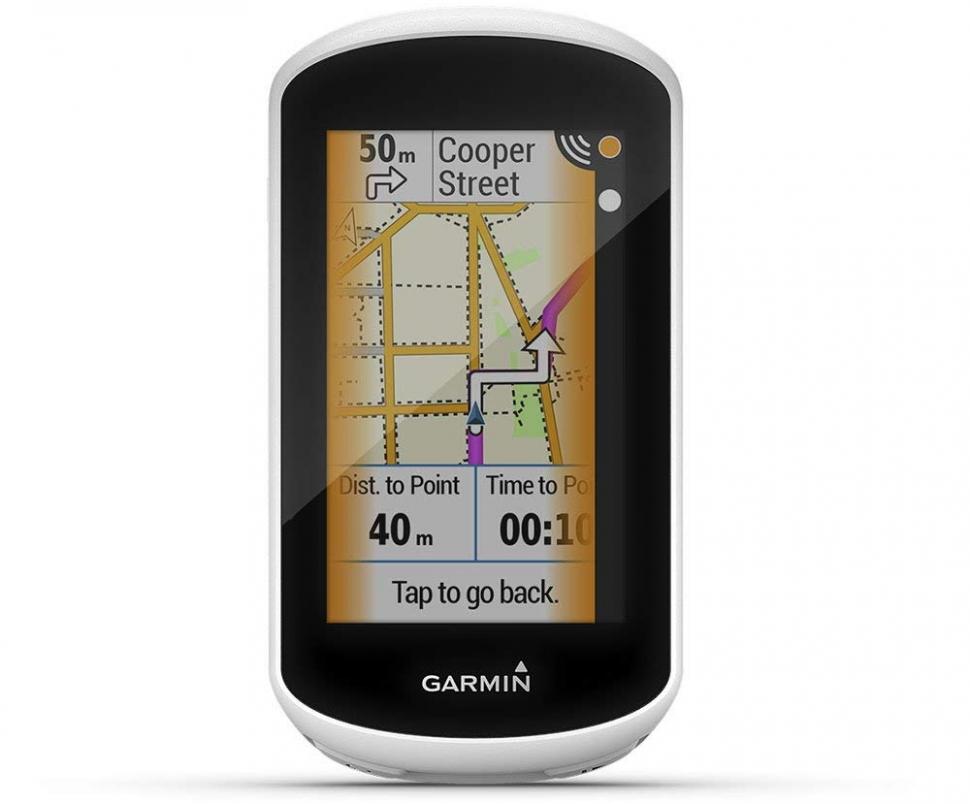
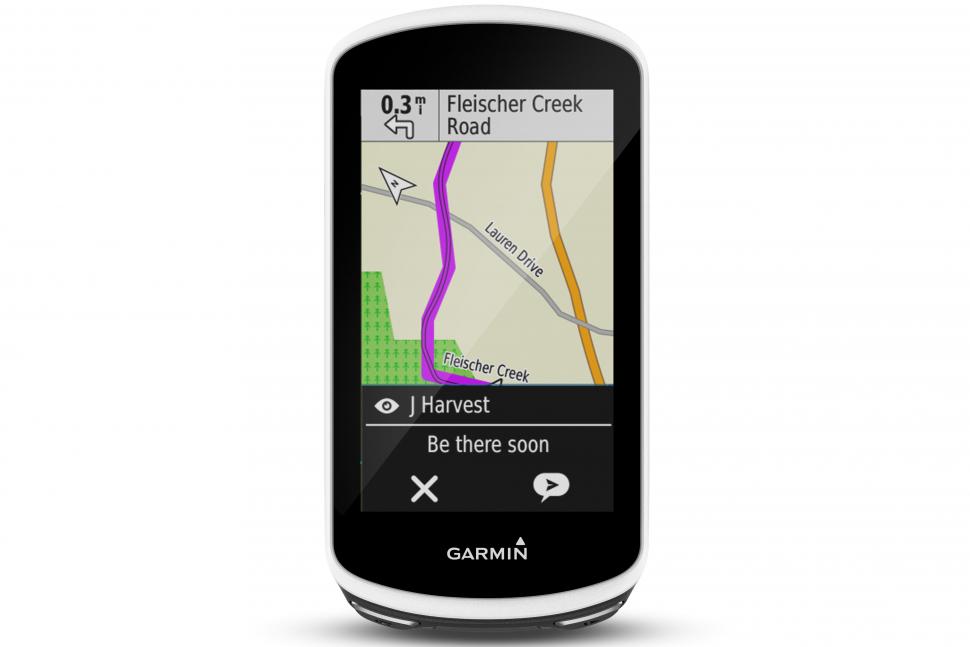

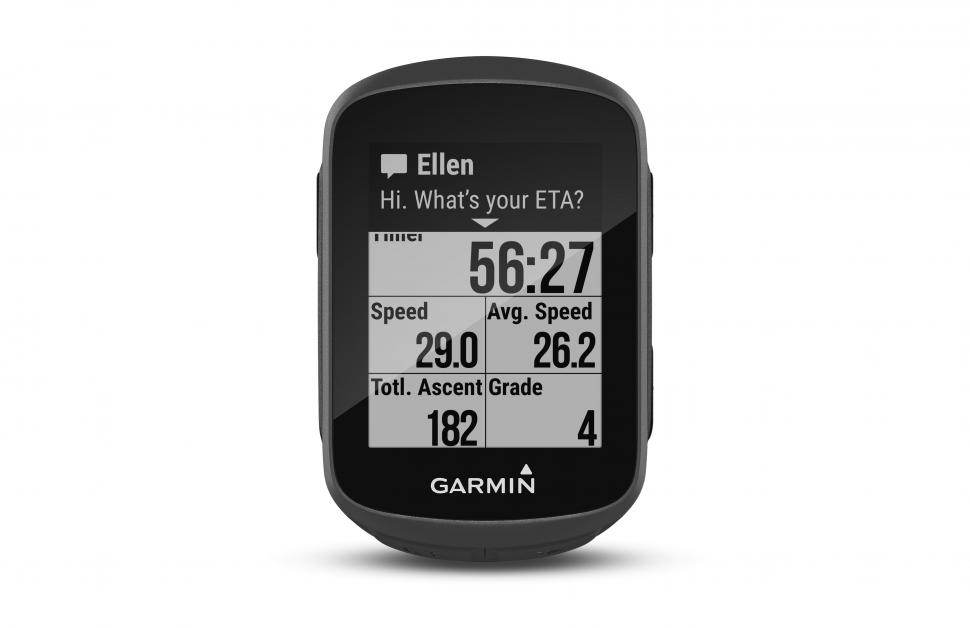
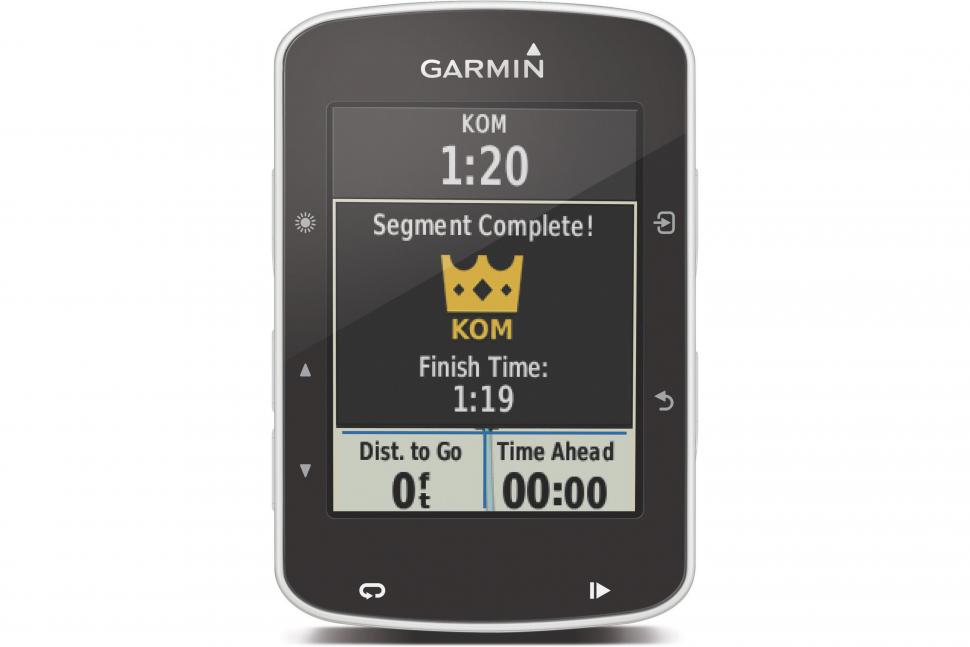

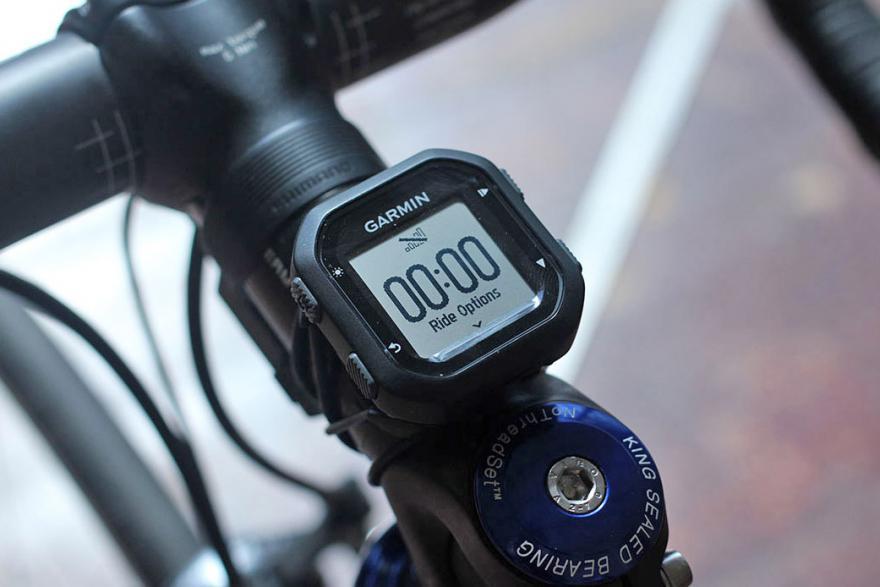
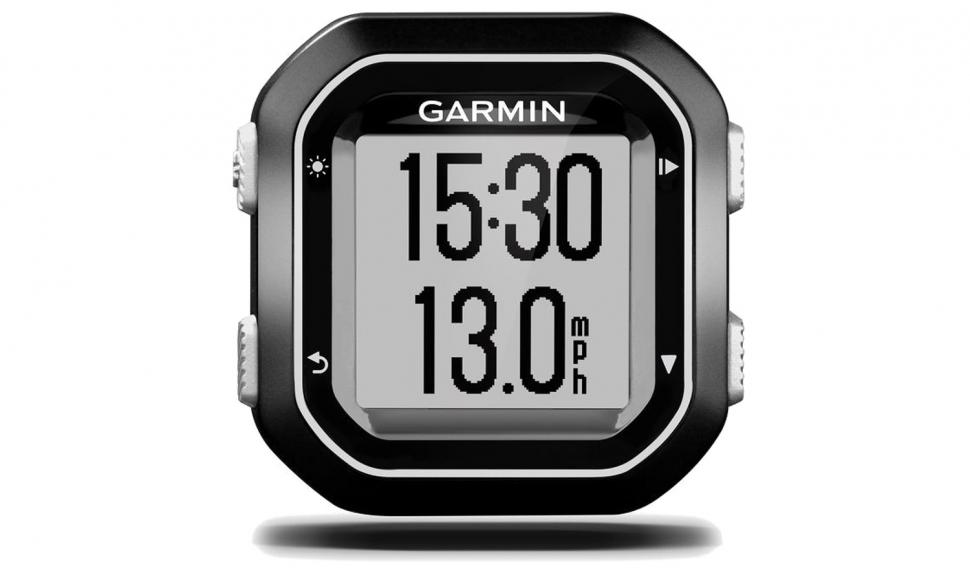
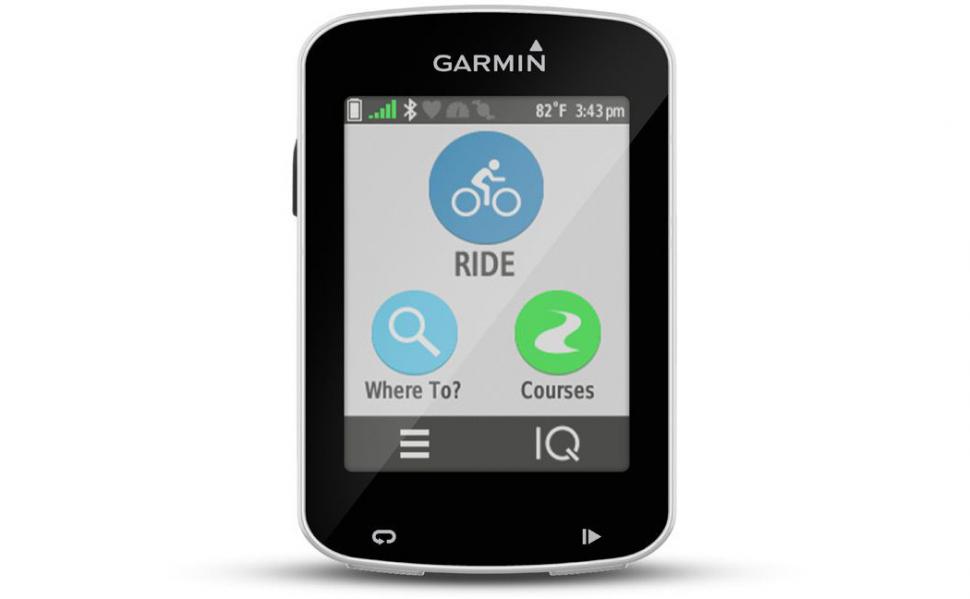
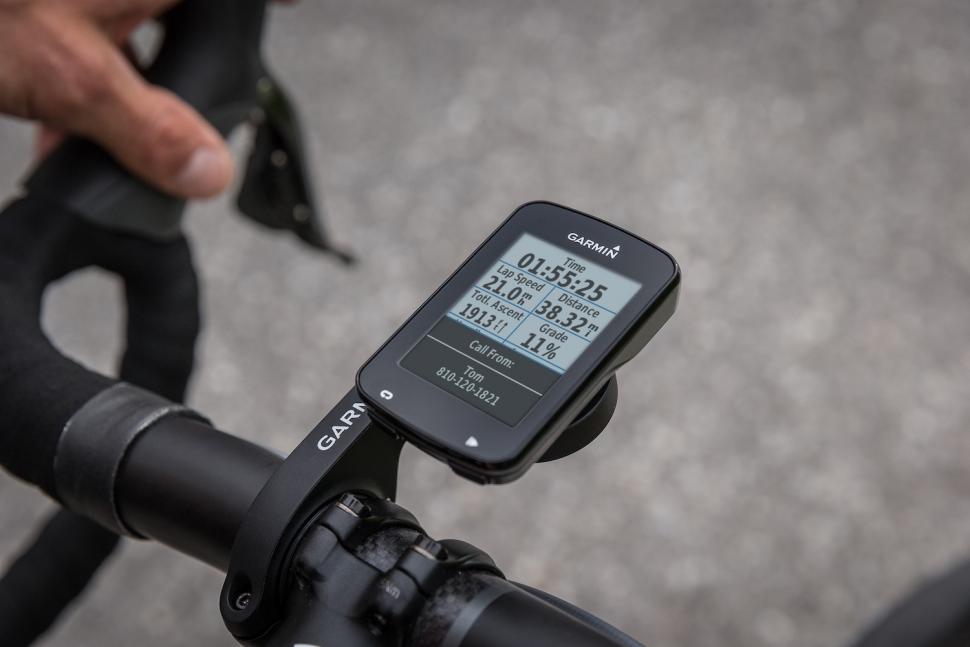


Add new comment
73 comments
Garmin navigation: tempting, beguiling, but will let you down just when you've started to trust it again.
The U-turn nonsense can occur even when you've used the device as a route planner, using only the internal map! Moreover, it may ask you to make a U-turn, not here and now on this grass track or single carriageway, but way down the road - I think 1.77 miles is the longest that I've seen. It seems to me that a sensible cyclist could make a U-turn anywhere on a road or track that doesn't have a central barrier.
As TheScotsman says, Garmin software is full of these absurdities and unreproducible glitches. Garmin really should take time out* to fix all their known bugs before they even think about upgrading their software or introducing new hardware. Then they could come back with a product that would really flatten the opposition. While they're at it they could also upgrade the new Garmin Connect Mobile, to allow older Garmins to connect to mobile phones via usb cable.
* a year, or more?
had an 800 about 6 years ago, loved it.
Started cycling again this year and got an 820...what a frustrating bucket of turd that thing is! even after all the bug fixes it still feels like a beta device. Speed sensor kept cutting out all the time.
Finally lost it with it, now boxed up and going in the junk box. Got myself a Wahoo Elemnt bolt yesterday and already like it more than the Garmin.
Up your game Garmin, there are competitors out there now.
This is what's stopping me from upgrading my 800. Would like an 820 simply for due to the advances in screen tech and easier data upload to Garmin connect but so many horror stories - presumably brought about by the more complex system not being properly tested/ functional.
My Wahoo has yet to miss a beat.
Every weekend on Strava a I notice someone i follow having Garmin issues.
Market leaders!
Just in the interest of balance, my two Garmin watches are superb.
My Edge Touring is a bit meh and was crashy for a bit, but that seems to have been resolved since an update. It was £150 for touchscreen, proper maps and turn-by-turn. Who else does that?
I have had 2 Garmins and have sent them back 6 times, my next GPS unit will be a wahoo.
After many years of dealing with flakey Garmins i have just hit buy on a leyzne super GPS unit......watch this space.....
My 810 crashed today after about 220km. Never in a million years will I buy another crappy garmin.
I thought I'd lost a long ride on mine but thankfully even though you couldn't see it from the menu the flat file could be dragged off by USB.
Like everyone else, I don't see me buying another. If their car units had all these problems they would be out of business, but until now they've had no competition for bike stuff.
I had a Edge 810 as well after 6 months of trying to get the navigation to work and hours spent contacting tech support, I sent it back.
I had an Edge 200 that was great until it died. I now have an Edge 20 which is fab. I also have an Edge Touring Plus which is the biggest pile of chode I've ever wasted money on.
the 200 was the best unit they ever made..... it went downhill after that
Never had a Garmin that hasn't been riddled with bugs.
Currently have a 520 that often crashes and sometimes uploads rides.
My next computer won't be a Garmin.
Pages